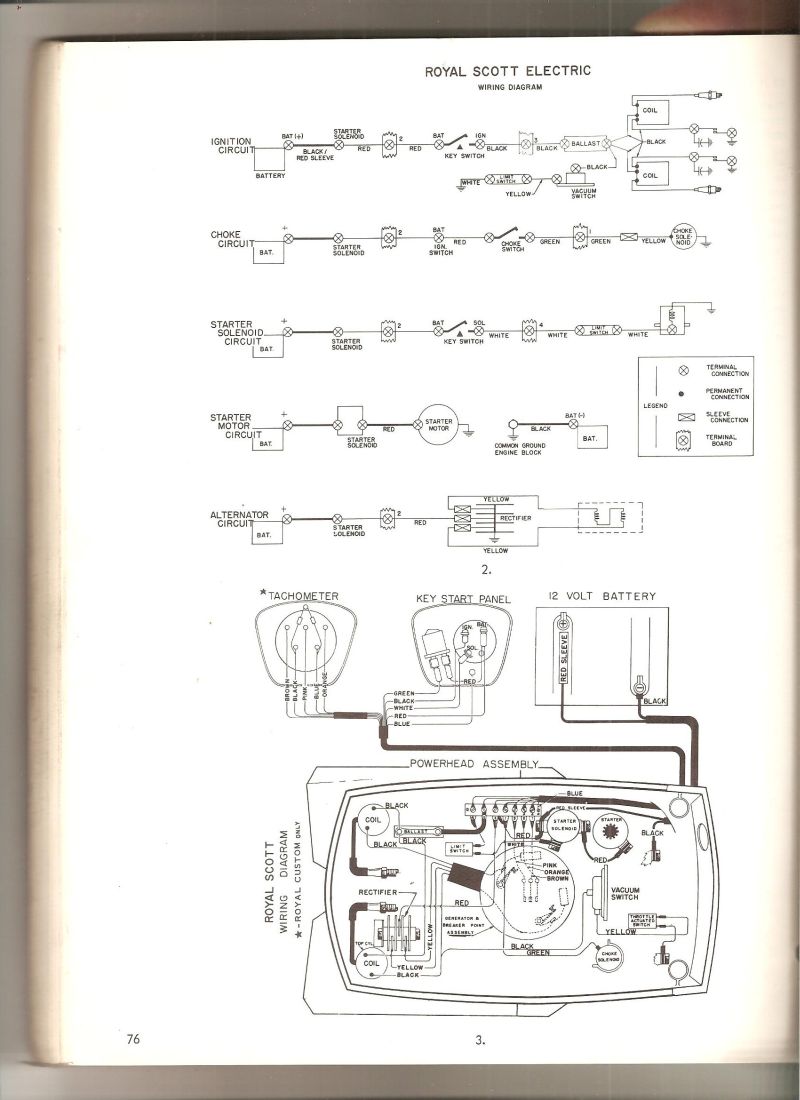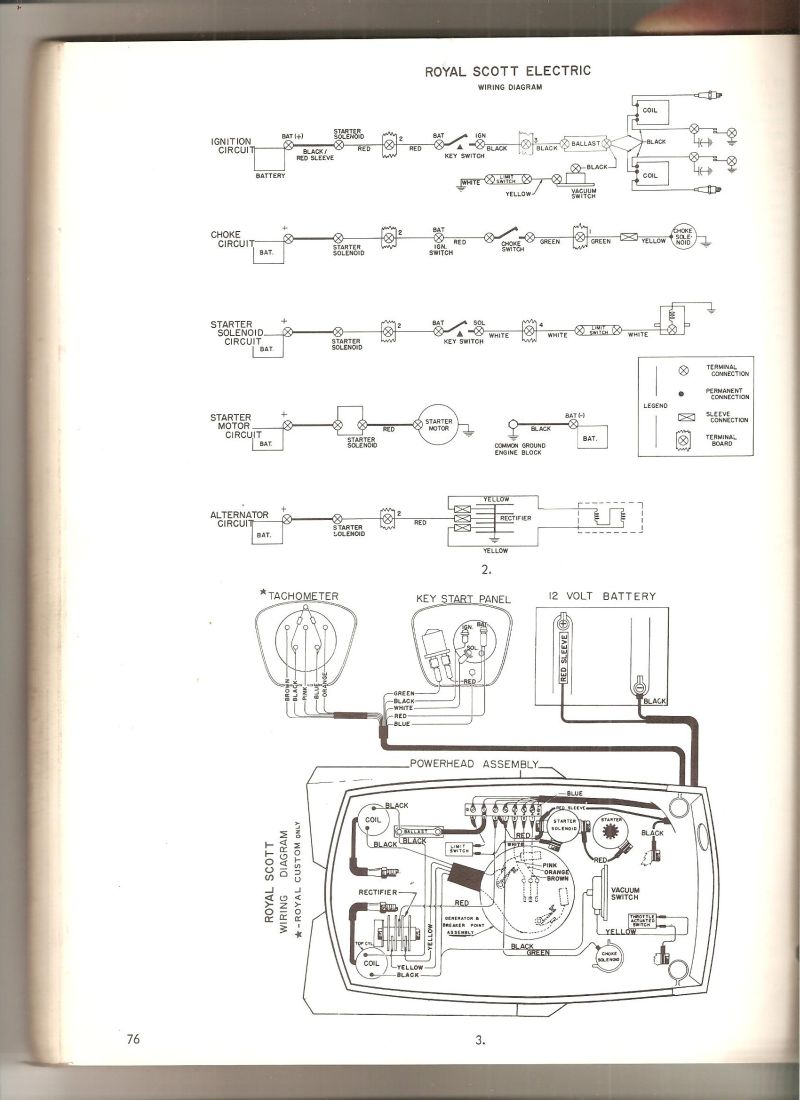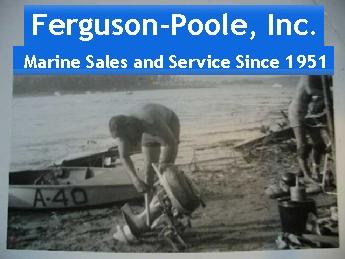Aznative,
I have attached a wiring diagram for a 1961 Royal Scott and it shows the ballast resistor between the ignition switch and the positive terminals of the two coils.
First, a little on what the ballast resistor does.
The problem with a points type of ignition is that it takes time to bring the primary winding up to full battery voltage and magnetic strength when the point set is closed. This is called the saturation time. At low RPM the points are closed long enough to adequately saturate the coil and provide a good spark. At high RPM the the time (not the
distance, which is called the dwell angle)the points stay closed is reduced considerably. The result is a weak spark. The solution would be to run the coil at a higher voltage at high RPM to make up for the reduced dwell time.
The problem with that is that at low RPM the coil would have too much saturation time and would overheat the coil and possibly burn out.
What we need is a two speed coil. One that can put out a good spark at low RPM and high RPM regardless of dwell (saturation) time and without burning the coil up at low RPM!
That's where the ballast resistor comes in.
The ballast resistor is in the ignition circuit to compensate for the shorter dwell time (time points are closed) of the point set at high RPM operation. During high RPM operation the short dwell time prevents full coil saturation, but the short dwell time also means the resistor is grounded a shorter period of time. The shorter grounded time means the resistor will not get as hot at high RPM as at low RPM. The resistance in a resistor gets higher as it heats, and lower when it is cool, so at high RPM the short dwell time keeps the resistor cool and it allows almost a full 12 volts through to the coils, increasing the saturation and providing a hotter spark.
At low RPM the longer dwell time (grounded time) causes the resistor to run hotter, it's resistance goes up, and less voltage, usually around 8 volts, goes to the coils.
The trick is in the design of the coil. The coil is designed to work at 8 volts. This means at low RPM and idle the longer dwell time causes the resistor to run hot, holding the voltage to about 8 volts. That provides adequate spark and doesn't overheat the coil.
At high RPM the resistor cools off, the voltage to the coil rises, and the coil receives close to 12 volts. The 12 volts "overdrives" the coil and keeps the coil saturation at the required level, giving adequate spark at high RPM.
So, at low RPM you get a higher dwell time, a hotter resistor, and lower voltage to the coil. At higher RPM, a lower dwell time, a cooler resistor, and higher voltage to the coil.
There, more than you ever wanted to know about a ballast resistor.

From what you have posted I don't believe your problem is the ballast resistor. Resistors rarely fail and when they do it's usually open circuit and the motor won't run at all.
How did you measure the output voltage of the resistor? Was the the motor running or off? The only way to accurately check the resistor is to either have the motor running or to disconnect the resistor from the system and check it's resistance. It should be roughly between .75 to 1.5 ohms.
From your results it appears you checked with the motor not running and the points closed. That would probably result in a 3 volt output from the resistor.
To rule out the resistor check the output voltage at idle with the motor running. It should be somewhere around 7-9 volts. If it really is 3 volts with the motor running, then yes, go ahead and bypass the resistor, but don't run it permanently, or more that a few minutes or you could damage the coil and points.
Normally, rough idle usually goes back to some type of fuel system or timing problem and you may want to get the basics out of way if you haven't already.
Are you sure you really have a problem? IMO Scott motors aren't the smoothest idling motor around. Did it idle better before and go bad, or has it always been bad?
Good luck with your problem.
Flying Fish



















